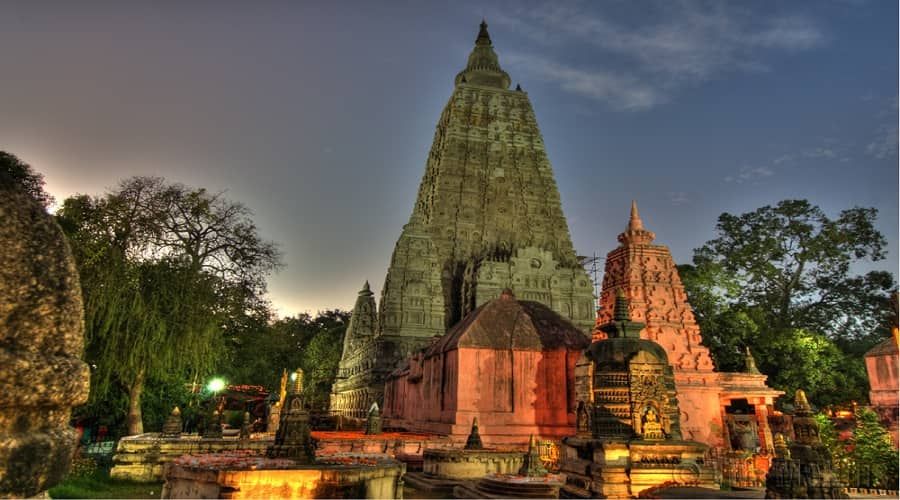
The History and Significance of Bodhgaya
Posted on April 4, 2024
Introduction
Bodhgaya is a place of profound spiritual significance and a major pilgrimage destination for Buddhists from around the world. Located in the Indian state of Bihar, Bodhgaya is renowned as the site where Siddhartha Gautama, the Buddha, attained enlightenment under the sacred Bodhi Tree. This blog delves into the rich history and enduring significance of Bodhgaya, highlighting why it remains a vital destination for those on a spiritual quest.
The Historical Context of Bodhgaya
The Life of Siddhartha Gautama
Siddhartha Gautama, who later became known as the Buddha, was born into a royal family in Lumbini, Nepal, around 563 BCE. Renouncing his princely life in search of spiritual awakening, he traveled across the Ganges Plain of northern India, seeking teachers and practicing various forms of asceticism.
The Journey to Enlightenment
After years of searching and meditating, Siddhartha reached Bodhgaya, where he resolved to sit under a Bodhi Tree and meditate until he attained enlightenment. It was here, in Bodhgaya, that he ultimately realized the profound truths of the Four Noble Truths and the Eightfold Path, which form the foundation of Buddhist teachings.
The Bodhi Tree: A Symbol of Enlightenment
The Sacred Tree
The Bodhi Tree under which the Buddha attained enlightenment is one of the most revered symbols in Buddhism. The original tree, a fig tree (Ficus religiosa), has given rise to several generations of trees in the same spot, each treated with great reverence by pilgrims.
The Mahabodhi Temple
The Mahabodhi Temple, a UNESCO World Heritage Site, marks the location of the Bodhi Tree. This magnificent temple, initially built by Emperor Ashoka in the 3rd century BCE, stands as a testament to the enduring legacy of Buddhism. The temple’s architecture is a blend of various styles, showcasing the historical and cultural influences that have shaped it over the centuries. The Significance of Bodhgaya in Buddhism
A Place of Pilgrimage
Bodhgaya is not just a historical site but a living center of Buddhist practice and pilgrimage. Each year, thousands of devotees from different parts of the world visit Bodhgaya to meditate, chant, and pay homage to the Buddha. The site serves as a focal point for international Buddhist gatherings, including the annual Kagyu Monlam Chenmo, a major prayer festival.
Spiritual Practices
Pilgrims engage in various spiritual practices at Bodhgaya, such as circumambulating the Mahabodhi Temple, prostrating, and meditating under the Bodhi Tree. These practices are believed to bring one closer to enlightenment, emulating the Buddha’s own journey to awakening.
The Modern Relevance of Bodhgaya
A Global Spiritual Center
In contemporary times, Bodhgaya has evolved into a global spiritual center, attracting not only Buddhists but also seekers of various faiths interested in the teachings of the Buddha. The town is home to numerous monasteries and temples established by Buddhist communities from countries such as Thailand, Japan, China, and Tibet, making it a melting pot of global Buddhist culture.
Educational and Cultural Hub
Bodhgaya also hosts educational institutions and cultural programs aimed at promoting Buddhist philosophy and practice. The International Meditation Centre and the Bodhgaya Institute of Higher Buddhist Studies are prominent examples, offering courses and retreats that draw participants from across the globe.
Conclusion
Bodhgaya’s history and significance extend far beyond its physical boundaries. It is a place where history, spirituality, and culture converge, offering a unique and transformative experience to all who visit. For Buddhists, Bodhgaya is the heart of their spiritual heritage, a place where the path to enlightenment was illuminated by the Buddha himself. As a destination for pilgrimage, reflection, and learning, Bodhgaya continues to inspire and guide seekers on their spiritual journeys.
Whether you are a devout Buddhist, a spiritual seeker, or a history enthusiast, a visit to Bodhgaya promises a profound and enriching experience. It is a journey to the very roots of Buddhism, where the quest for enlightenment began and where it continues to resonate across the world.
